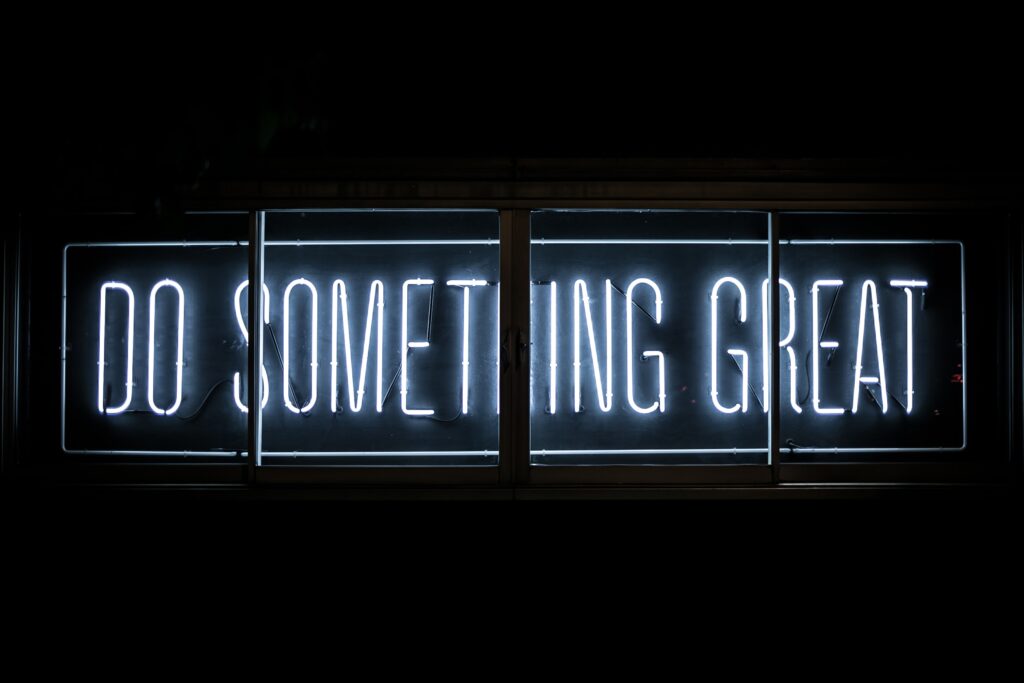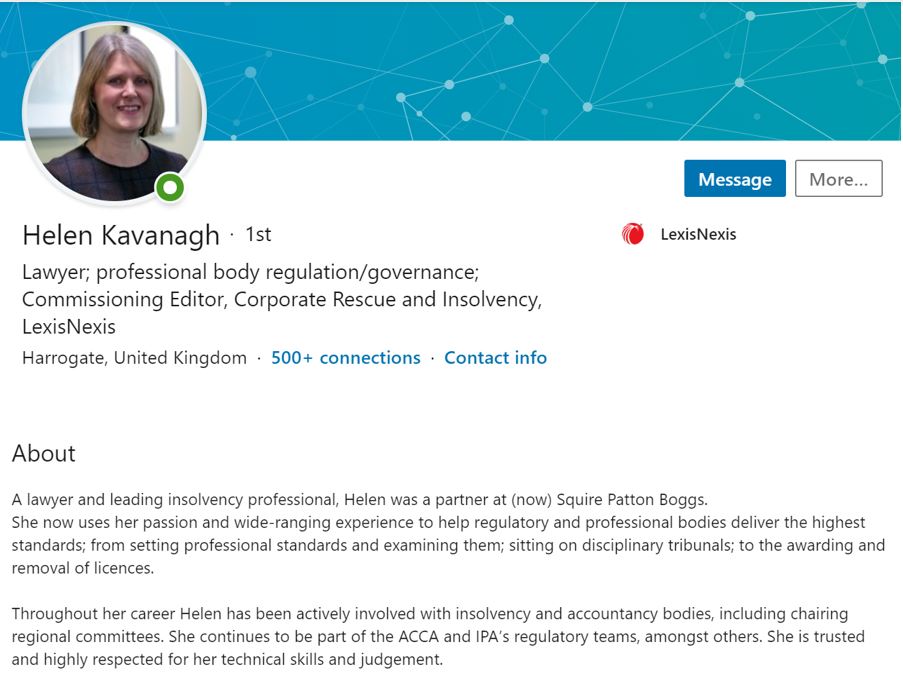14-day New Year action plan to make LinkedIn work
23 January 2020 By Victoria Tomlinson

I can’t tell you how many people I meet who say, “I must update my LinkedIn”.
If you are actively looking to create a second career after you leave corporate life – or have already left and looking for roles and new activities, then LinkedIn is probably the most essential tool to help you.
If you have been putting it off, here is an easy 14-day plan to get it up-to-date and get it working for you. All you have to do is set aside half an hour every day for 14 days. Just be disciplined about doing this – it’s an investment in you. Once you get into the routine, you will set a pattern for the long term. That’s when LinkedIn really starts to work.
Day 1
Get a friend, partner or son/daughter to take a photo of you on their phone. Brush your hair, put on a decent top and smile for the camera. Upload it.
Done!
Day 2
Have a look at ten people’s profiles on LinkedIn – choose people in your network whom you rate. Jot down five things you like about their profiles – and five things you don’t. Think about how you want your profile to look and what it should say.
Day 3
Write down three things you are trying to achieve at the moment. Do you want to be a trustee, consultant, mentor or more?
What are your skills and experience that will make them interested in you? What problem can you help them solve? This will help you define your personal brand. Make sure you explain who you are and what you do in your professional headline (job title) and in the About section.
Have a look at Helen Kavanagh’s profile to see what you might do with these sections.

Day 4
Write your professional headline (120 characters including spaces)
And your About section (you have 2000 characters including spaces).
Then send this to a few people you trust and ask if it reflects you. Would they hire or use you?
Day 5
Go to edit on LinkedIn and update the About section and your headline
Day 6
Go through the Experience section on your LinkedIn. Is it up to date? Have you got all your voluntary roles in there?
Day 7
What are you trying to achieve? Draw up a target list of 20 companies, charities or organisations that you would like to get involved with. Do this as a proper list and leave room to jot down notes against each organisation.
Go to LinkedIn and search each organisation and see what names come up that you might know. If it only has second connections, click on some of those names and see who else knows them. You can do this under Highlights

Day 8
Set aside an hour. Contact ten people that you can talk to about the organisations you are interested in. Could they spare a 15-minute call or a coffee? Ask them what issues are going on – don’t try and sell yourself. Just do research. If you develop an interesting conversation, they may well introduce you to someone.
Day 9
Contact another ten people.
Day 10
What issues are starting to come through from your conversations? Go online and look for an article around this. Post it on LinkedIn.
Day 11
Search for your targets on LinkedIn and look at what they are posting. Have they said or shared anything that is interesting – and resonates with what you are doing?
Share it. Comment if you want to add a comment.
Day 12
Think about your target list. Who should you be connecting to on LinkedIn who is operating in this field?
Connect to 30 people with a personal message – mention you are looking to work in a field or in certain roles and suggest a chat or coffee, when you connect.
Day 13
Go to your LinkedIn connection requests. Unless there is anyone you really don’t rate, accept them all. Then send a message to any that could be useful in future, “Thanks for connecting. Interested in what you are doing – perhaps we could organise a call?”
Day 14
How did that go? Not too painful? Now think how you could invest half an hour a day, every day in the future. Make it a habit to initiate conversations.
Not all of them will go somewhere, but don’t worry about that. They may be like you and not very active on LinkedIn! Just engage with people you can find who are active and respond.
For more details on how you do all this, read some of our other blogs
https://www.next-up.com/blog/8-linkedin-essentials-for-a-winning-unretirement-profile
https://www.next-up.com/blog/using-linkedin-to-find-new-roles-and-win-business
https://www.next-up.com/blog/7-inside-secrets-to-making-linkedin-really-work
https://www.next-up.com/blog/how-to-write-a-linkedin-profile-to-get-non-executive-director-roles
https://www.next-up.com/blog/how-to-write-linkedin-content-that-will-win-you-business-or-roles
And if you are still finding this difficult – we can help! Just go to our service page and we’ll write your profile for you.


